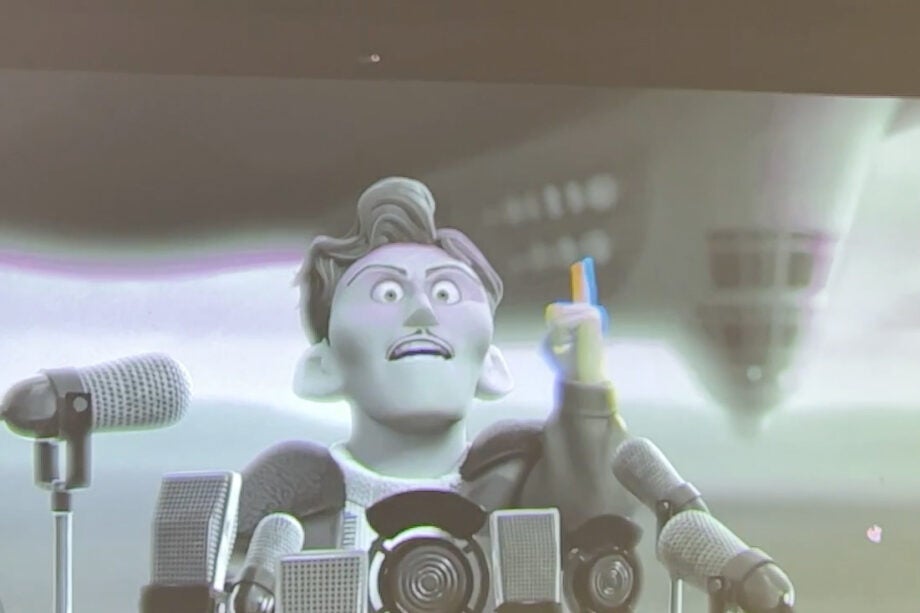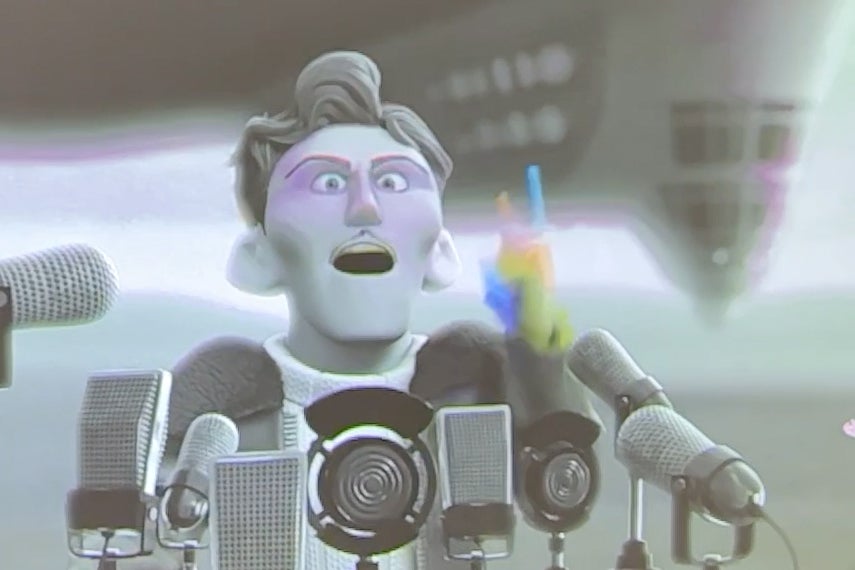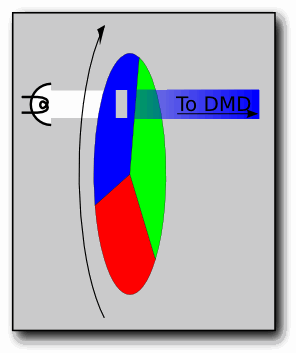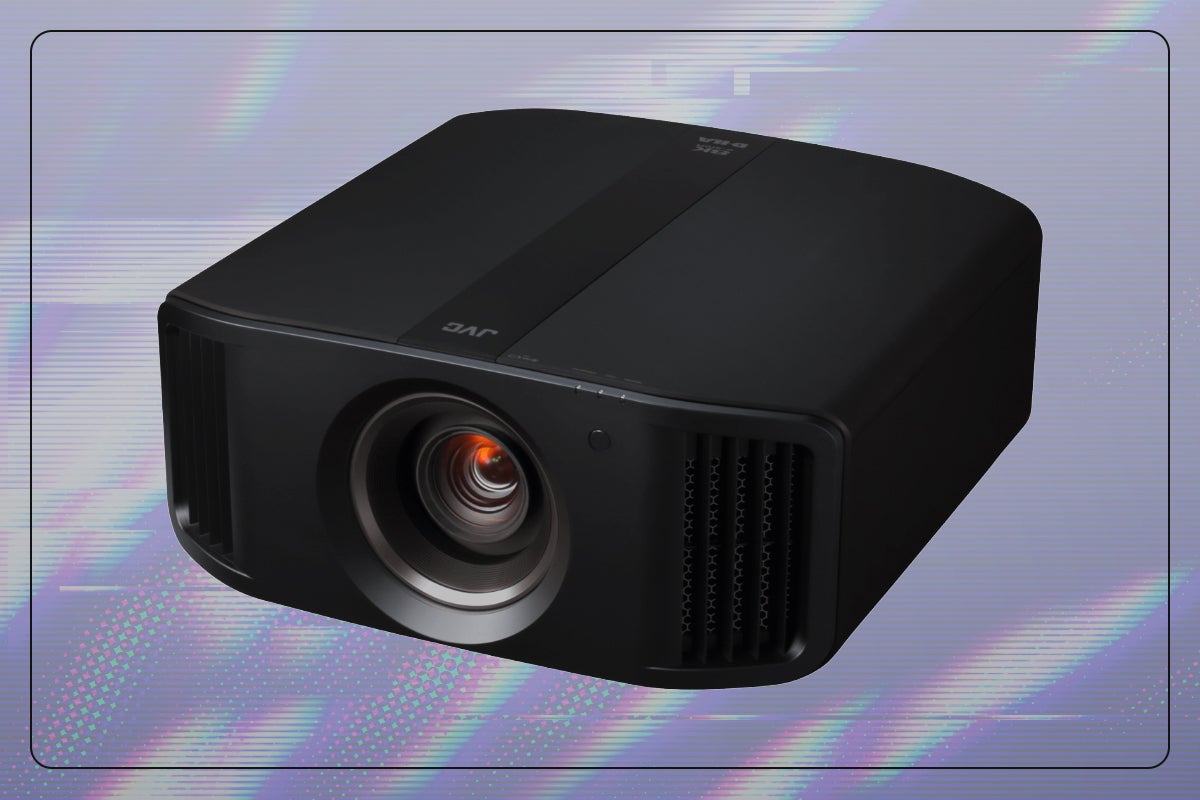What is the DLP rainbow effect in projectors?

As one of the major projector technologies, DLP powers many models, from high-end home cinema models to portable models.
As clever as the technology is, most projectors have the DLP rainbow effect to some degree or another. Whether or not this is an issue depends on the model of the projector, how sensitive you are to the effect and the type of content you’re watching. We’ll explain it all here.
What is the rainbow effect?
The rainbow effect is best described as a flash of rainbow colours, usually spotted at the corner of your eye, rather than something that you see head on. The phenomenon can often be spotted when you move your head following motion on screen, when there are fast-moving objects, when there’s a transition between scenes and even if you blink.
The effect can be worse with black and white footage. We find that watching black and white footage and blinking can usually bring on the effect. Not very useful for enjoyment, but it does help us tell what kind of technology a projector is using. You can see an example of the rainbow effect below, taken using a high-speed video. As you can see, the hand is made up of multiple colours, slightly out of sync.

Why do we see the rainbow effect?
The rainbow effect is down to how DLP projectors work, and this applies to single-chip DLP projectors only. In all single-chip DLP projectors, there’s a DMD (Digital Micromirror Device) at the heart of it. This has hundreds of thousands (or even millions) of tiny mirrors, one for each pixel on the screen. The resolution of the chip defines how many mirrors are available.
A light source shines onto the DMD. Each mirror can be tilted to an ‘on’ position, where the light is reflected out through the lens, or to an ‘off’ position, where the light is reflected to a heat sink and absorbed.
Shades of grey are created by rapidly turning the mirrors on and off: the more a mirror is on, the closer to white it is; the more to off, the closer to black it is.
This technique lets a DLP projector cast a greyscale image. To add colour, there are two methods used. First, is the colour wheel, made up of red, green and blue segments. This spins in front of the light source, shining the three primary colours.
For each frame of a film or TV show, the DLP projector shines three images: one red, one green and one blue. As this happens very fast, our brains perceive one colour image, rather than three separate images.

For LED or laser images, there’s no colour wheel, but three primary colour light sources (red, green and blue), which take turns to shine and make up the picture. Again, the final image is a combination of all three colours, which our brains merge into one.
It’s the fact that three images are being combined into one that causes the effect. Some people are naturally more susceptible to the rainbow effect than others.
Note that three-chip DLP projectors, work by the light source being simultaneously split into three (red, green and blue) and each chip taking on one colour. And the lens, the three colours are recombined into one image at the same time. This is similar to how LCD projectors work.
What has been done to improve the rainbow effect?
For colour wheel DLP projectors, there are some advancements. First, we saw projectors that added a white segment to the wheel to help boost brightness. Next, there are models that have been created to address the rainbow effect by speeding up the process and increasing how many times per second each colour can be seen for.
Initial projectors ran at 60Hz per colour (each colour was shown 60 times per second). Some projectors have a faster colour wheel that spins at 120 revolutions per second, giving 120Hz refresh rates per colour. As there’s a smaller delay between each colour being shown, the layering is less obvious and the rainbow effect is harder to see.
Newer projectors again, double each colour on the wheel, again increasing the number of times each colour is shown per second to 240. That helps reduce the rainbow effect.
For laser and LED projectors, each light can be strobed faster, improving the layering and reducing the rainbow effect.
What can I do to reduce the rainbow effect?
The quality and age of your projector will have a part to play. Buy a modern DLP projector, such as the XGIMI Horizon Pro, and the issues are hard to spot. We found that we had to go looking for the rainbow effect, rather than seeing it naturally when we reviewed that model.
Outside of that, try watching without moving around too much. Reducing the ambient light can help, too. If you really struggle with the effect, then a three-chip DLP model or an LCD projector may well be better.



